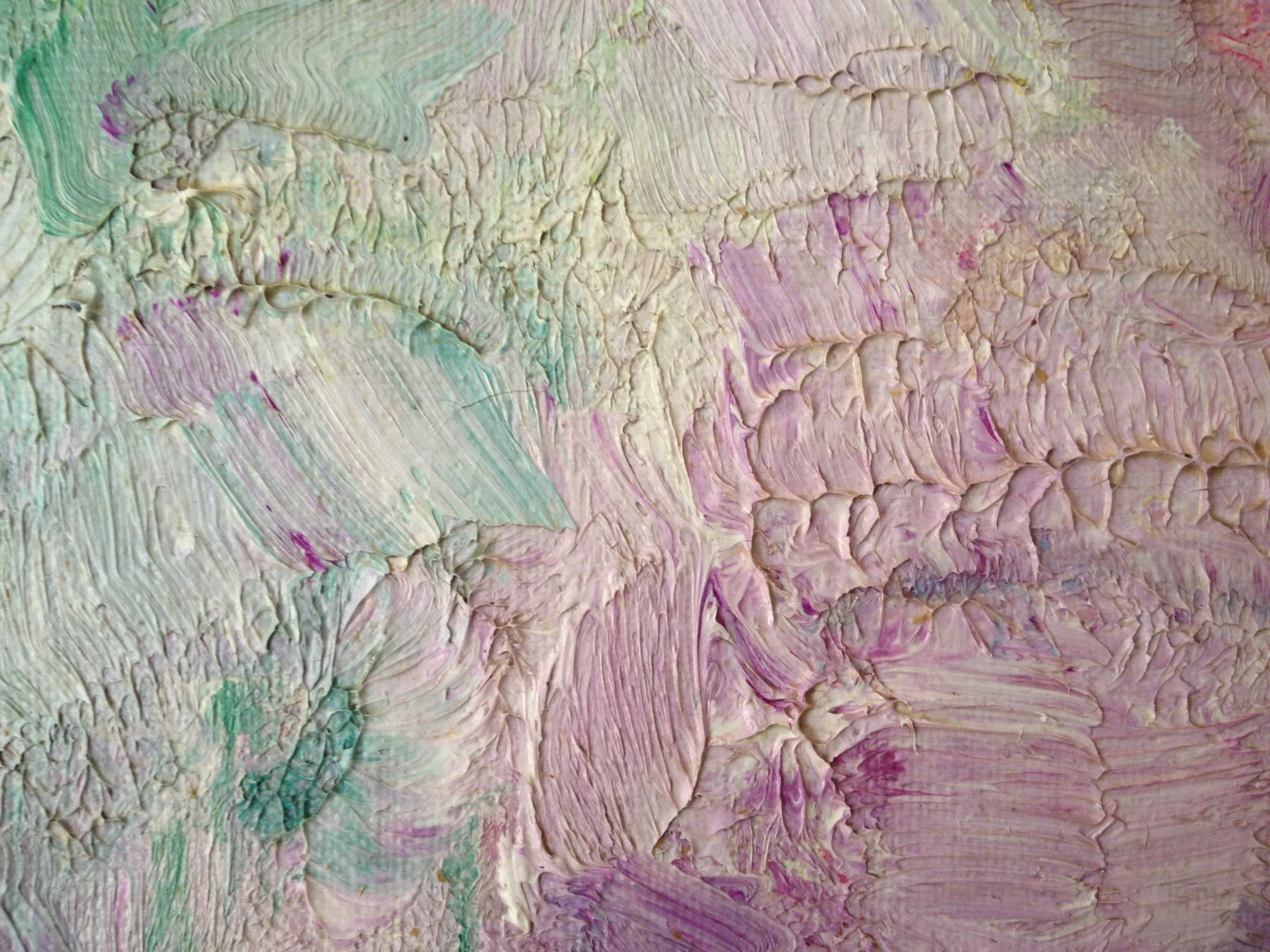“...you see, colour to me, is the soul of painting. When I want to represent something on canvas, I put side by side strokes of colour in values that my eye can absorb as they reverberate from an artistically interesting object. Colour is first and form is second. I would like to describe my work as two dimensional art.”
Paul-Jean Martel Philadelphia Record-1943
Video
An extremely in depth interview with artist and teacher Dan Pinkham. He describes the way in which Martel creates his Paintings in Artists Speak.
Close-up of "Strawberries for Child" 1920
Paul's Technique
By
Dan Pinkham
"He works in a different place with his canvases and his values, colors and temperatures. That consequently, takes the viewer and says, 'You know what? We're going to have to look at this in a different way...I'm bringing you into my world.'
Lots of times people don't like to leave their world. If you really want to get involved with the great aspects of art-you have to leave your world. There's where growth, understanding and great leaps of personal growth happen.
Childs Head in "Strawberries for Child" 1920
His paintings are so personally his view and he allows us into his personality, his heart, and his way of seeing the world. I think most representational painters are so busy trying to paint what they think others want-so they can make a living by it. The thing that I just completely love about his work is...he didn't sell out.
The certain echelon that don't sell out, and stay true to themselves, they are going to probably be the ones most likely to identify themselves in his work- and are going to embrace his work.
"Strawberries for Child" 1920
I think one of the most important aspects of his work is his value. meaning his lights and darks. Because he has to establish those lights and darks and where he's going to play on the keyboard in that range-and then, once he decides that-then he manipulates the color to work within that range. Because he shifts his values, many times high key, that means he has to find the subtle contrasts through color and temperature. He's basically brought all his values in close. So he's not going to find a whole lot of contrast with lights and darks. he's going to have to find his contrasts through his color separation. He could have a warm red, same value red, next to a cool red. What happens is when you squint it all just becomes one value but when you open your eyes- they play off one another. And the warm red makes the cool red stronger and the cool red makes the warm red stronger. So he finds a way to find separation. Through his ability, and subtlety, to manipulate color and temperature-he's able to just give us enough form and a sense of form-that then we can start to identify with the objects, or subjects, that are in the painting.
He's speaking at a very rarified aire- a language, color and temperature and I think he's really speaking to a large part of the subconscious as well.
Once we identify what's in the canvas then our brain clicks in and makes that little adjustment-and it all comes to life."
Daniel Pinkham-Artist and Teacher -2007 interview



